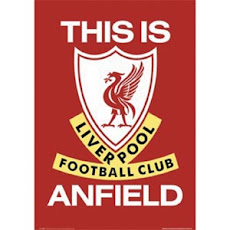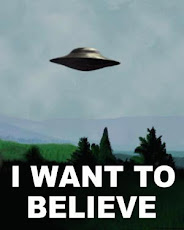Post-War Blues II
The Legend of Moro, Choly,
and the Quest for the Holy Grail of Collegiate Sports
by rick olivares
Even during those early days of basketball, height was already might. Imagine then the towering La Salle Green Archers with 4/5 of their starting unit of Martin Urra, Tony Banggoy (brother of San Beda Red Lion Lito Banggoy), Ramoncito Campos, and Juan Muñoz who all stood at least six feet tall (guard Alex Montilla was the only a shade or two less) when they confronted an Ateneo team whose starting unit had a pair of 5’4” players in team captain Choly Gaston and Oscar Battalones and the 5’5” Freddie Campos. Ole Orbeta was the tallest Blue Eagle at 5’11.” The Blue Eagles were built for speed and fast and furious excitement. They were the Ginebra San Miguel of their time for their popularity extended beyond the gates of Ateneo’s Padre Faura campus where its perimeter was still littered with crosses from the war dead.
Gaston, dubbed “the Cagayan Cyclone” (he was actually from Negros but studied at both the Ateneo De Cagayan and Ateneo De Manila) by sportscaster and sportswriter Willie Hernandez, was a pest on the court. Choly not only inherited jersey #11 from brother-in-law Baby Dalupan but picked up from where he left off with a hellacious form of defense. No lead was safe when Choly was on the court. If a player wasn’t too careful with the spheroid, the next sight he saw was Gaston hightailing it to the opposite end for a two-handed lay-up off the window. During an exhibition game against the world-famous Harlem Globetrotters at the Rizal Memorial Coliseum, the hardcourt wizards’ Marques Haynes asked for a volunteer from both Ateneo and NU to strip him of the ball. Haynes’ claim to fame was being acclaimed as the world’s best dribbler and taking the ball away seemed a daunting if not improbable task for anyone. NU’s Tony Villamor went first and was toyed around by the dexterous skills of the Globetrotter.
When it was Gaston’s turn, the people who had packed the coliseum to the rafters began chanting: “Choly! Choly! Choly!” Haynes smiled at the Errol Flynn-mustached Gaston and dared him to do the impossible. Three seconds later, the Globetrotter’s toothy smile was replaced by shock and horror as the Cagayan Cyclone did the improbable by swiping the ball away as the jam-packed coliseum erupted into cheers.
Sadly though, those moments were all the post-war Ateneo teams had. They fielded some pretty good teams and played some great and memorable games but still a seventh cage title for Ateneo seemed like the search for the Holy Grail.
Moro Lorenzo broke NCAA scoring records but it wasn’t enough to get the team over the hump. Lorenzo lamented the focus on him and tried to deflect praise and attention. “Often times the glory of a victory is given to the point-making forwards,” pointed out the Blue Eagles’ three-time team captain. “No one says anything about the men who control the rebounds, about those who feed the forwards, and those who stop the opponents’ offense even at the cost of their own disqualification. Does anyone congratulate Ole (Orbeta), Pepot (Gonzalez), or Tits (Tañada)? Some don’t realize that there are five men on the court and sixteen men on the team.” The losing seemed to get to Lorenzo that after a bit, he looked forward to the football season for some respite.
Even on the pitch with the country’s top-rated goalie in Louie Javellana, the NCAA Football championship was just as elusive as ever. In a game against San Beda at the football field at the Rizal Memorial Coliseum, two late and controversial penalties were called on Ateneo that the Bedans gleefully took advantage of. A downcast Ateneo gallery booed off the referee as their rivals from Mendiola escaped with a 2-1 victory. Suddenly, a livid Chito Tinsay stormed out of the dugout and lunged at the referee. It was a sight that elicited both laughter and horror for there was the referee, ball in hand looking back with utter terror on his face with a steaming mad Ateneo football player hot on his heels. “The referee broke track records that day,” joked one Ateneo supporter who was on the stands. In the dugout after game, Fr. Austin Dowd chastised the team and a thoroughly embarrassed Tinsay who had a towel draped over his head. “What a disgraceful game that you played,” thundered Fr. Dowd (as if he didn’t have a loud enough voice already) reciting a litany of the team’s transgressions during the game. “And you, Mr. Tinsay, a most disgraceful thing that you did to the Ateneo.” By now, Tinsay was nearly in tears. “You should be ashamed of yourself… you missed the referee!” With that moment of levity, the heavy cloud of gloom that hung over the Ateneans’ locker room dissipated. “That was classic Fr. Dowd,” remembered Fr. Bert Ampil. “He always knew what to say at the right moment. He didn’t really mean what he said but he had a way of waking up spirits.”
But there was a student-athlete then who held sway and transfixed the post-war generation with his fighting spirit... Luis “Moro Lorenzo. “We’d be 20 points down with two minutes left in the game but you’d be hearing him egging his teammates on: “Pwede todo via. Pwede todo via. Kaya pa ‘yan,” recounted Orbeta who played with Lorenzo for two years. “Kung may Filipino idol noon, it was Moro Lorenzo,” fondly recalled Fr. Ampil who was in high school then. “Even the players from other schools recognized that he had something about him that the others didn’t have. Probably other players were even better than he was somehow pagtayo ni Moro dun sa harap ng audience o pagtayo niya sa basketball court there was something about him. There was a leader there that we all wanted to be also. That’s what he did for the Ateneo.” It was Lorenzo’s indomitable spirit that inspired the young Fr. Bert to join the cheering squad. “It was that first cheer rally that we had back in the old gym and Moro was introduced to the student body. The first words that came out of his mouth were, “My fellow Ateneans.” He went on to talk about what it meant to play for the Ateneo and how the team badly needed cheers. “I was not a cheerleader then,” recalled Fr. Bert. “And I thought at that time, ‘If it truly means that much to them then I’ll cheer. I’ll never get a chance to play basketball for the Ateneo. I’ll never get a chance to play football for the Ateneo. But I can do my bit on the stands for the Ateneo.”
Little did Fr. Ampil know that an incident up in the stands will forever be lodged in his memory even if it’s a bitter one. In a 1948 basketball game against De La Salle, Ateneo had all but wrapped up another win against the rival Green Archers. The Blue Eagles held a one-point lead with two seconds remaining and the blue and white gallery had just struck up the opening strains of “Roll Up the Victory” when Archer Eddie Decena took the ball, dribbled into La Salle’s side of the court, stepped back onto Ateneo’s side (that was clearly a backing violation) then threw up a heartbreaker of a shot at the buzzer. “Drama talaga” recalled Fr. Bert who was on the first-ever expanded cheering squad that year (the cheerleaders numbered an unlucky 13 that year). “I remember, we were already singing the part of "Roll out a Victory, we ask for nothing more!" and then – WHAM!!! Tapos. Ang sakit. Hanggang ngayon. I can still feel that song ending with a squawk in the throat!”
“I don’t remember too many of the games I played back then,” confided Baby Dalupan who was on his last playing year then. “But I will remember that game as long as I live. We protested because Decena clearly was guilty of a backing violation, but the technical committee didn’t see it our way.”
Cheerleader Totoy Avellana in another déjà vu moment was so angered by the loss that he led the Ateneo gallery to another wave of non-stop cheering that prevented the La Salle side from belting out their victory song. “La Salle couldn’t get a word in,” chuckled Avellana’s longtime classmate and friend, the late Bonny Ocampo. “They got tired of waiting for Ateneo to stop cheering so they packed up and left. It was another moral victory.”
Ateneo would gain a measure of revenge two years later in 1950 despite being cellar dwellers with a 2-8 record. Their only two wins that long and lost season? Against De La Salle. “Winning those two games against La Salle was our championship,” consoled Poch Estella who played on those hardluck teams.
The post-war teams did not immediately produce championships. The “luckless” years taught the value of hard work and patience. One best exemplified by Jose Cacho who was Ateneo all the way. Called “Kalawang” or “Rusty” on account of his freckles, Cacho whiled the time away during the Japanese occupation by playing football. After the war, he once more donned the immaculate white tank tops (the only blue on them was the name “Ateneo” and the number of the player) for the Blue Eaglets whose fortunes mirrored that of the senior squad’s. “Losing bothers me sure,” explained the 5’8” forward. “But you don’t wear your wishbone where your backbone ought to be.”
Sometimes the team called on Divine Intervention just to get that win or two that would propel them to the next level. “We prayed a lot of Hail Marys then,” said a wistful Lorenzo. “But in the end, we were just as we prayed in the Athlete’s Prayer -- standing by the road and cheering the winners as they go by.”
It wouldn’t be too long before Ateneo fielded a winning team. The start of the 1950’s found the Blue Eagles gradually getting better. It wasn’t that their opponents got weaker. Far from it. In fact, Ateneo ran smack into the San Beda Red Lions that paraded its storied line-up bannered by “the Big Difference” Caloy Loyzaga who displayed a polished game far beyond his young years. Mapua had the explosive Tanquintic brothers Tancho and Cadi. Letran countered with the legendary Murder Inc. behind the prolific Louie Tabuena, Lauro “the Fox” Mumar, former Blue Eagle Nilo Verona, and Ramon Manulat. Ateneo in the meantime was bolstered by its former team student-manager, Mike Littaua. But Littaua would prove to be no scrub. He would provide the team with much needed scoring sock and endgame poise together with another deadshot in Ramchand Motomuul. “We knew we had a team that could compete,” recalled Orbeta. “And we just wanted to win one for Choly and Poch who were graduating.”
Choly Gaston was quite a sight to behold in and out of the court remembered many who were at the school at that time. “He was like this larger-than-life character despite his small size,” said Moying Martelino. “He had this movie-star mustache and would drive to school in the chopper (motorcycle) that made him look real cool.” “Despite being the smallest one on the court, he was certainly one of the most exciting,” chipped in Poch Estella. Choly would sky to collar those rebounds and his zigzagging through less agile defenders for a deuce that would bring the crowd to its feet. “Tremendous athleticism that young man,” added Estella who helped set screens for Gaston to puncture the hoop. “The moment Choly stepped onto the court as a Blue Eagle, he was a superstar.”
Talented and exciting as the Blue Eagles were, they still had to win the NCAA cage title (for San Beda was lording it over the league at this point). In the wake of Moro Lorenzo’s graduation (he would take up higher studies at Cornell) and the sudden loss of recruits Lauro Mumar (to Letran), Bonnie Carbonell and Lito Banggoy (to San Beda) who were expected to vault the team back to elite status, Fr. Edgar Martin, the chief architect of Ateneo’s athletic program, puffed on his pipe, grunted, and pulled out the schematics for Plan “B.”
Plan “B” wasn’t some fresh faced recruit. The team had enough stockpiled for a championship run and all it needed was a little more seasoning. The back-up plan called for bringing back a familiar face. One who helped steer Ateneo to the first grand slam in local cage history from 1931-33 and would eventually coach the Blue Eagles… Bibiano “Bing” Ouano. Ouano was the MVP of that storied Blues and Whites team that won an amazing 25 straight games in 1931 and featured such heavy hitters as Primitivo Martinez, Raul Torres, Amador Obordo, Jing Roco (the person he was replacing as bench tactician), Jess Suarez, and Pete Schlobohm among others. And that move would prove to be the right one for a return to the glory days was just around the corner.









No comments:
Post a Comment